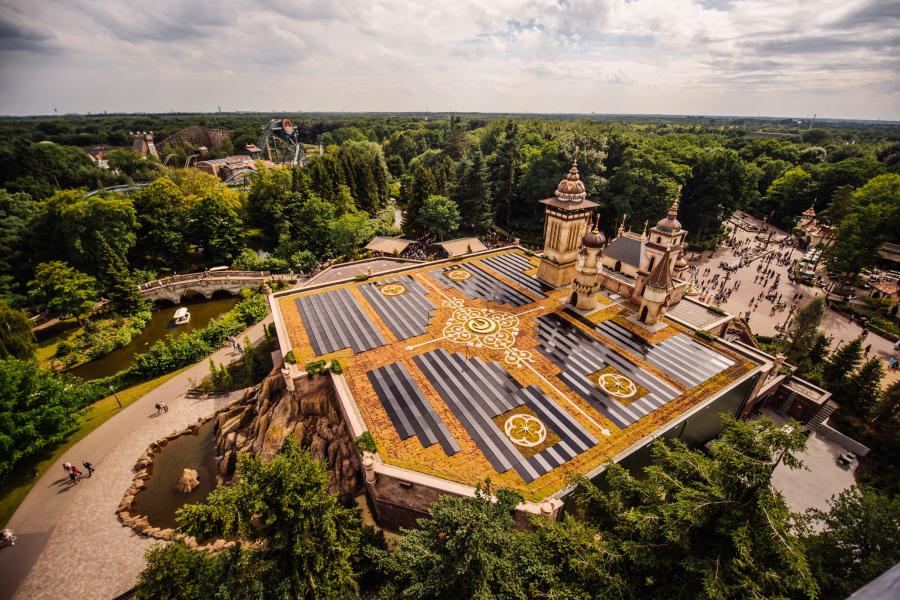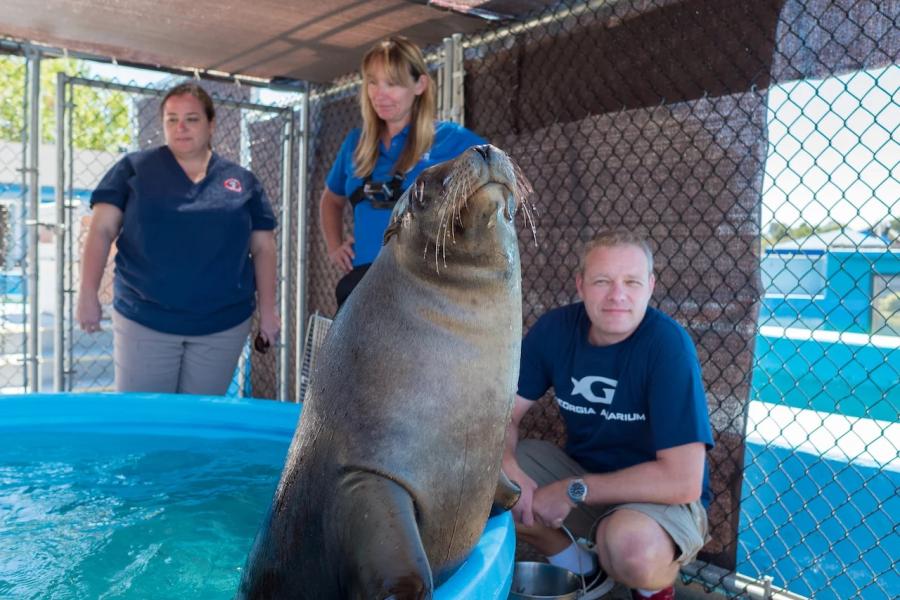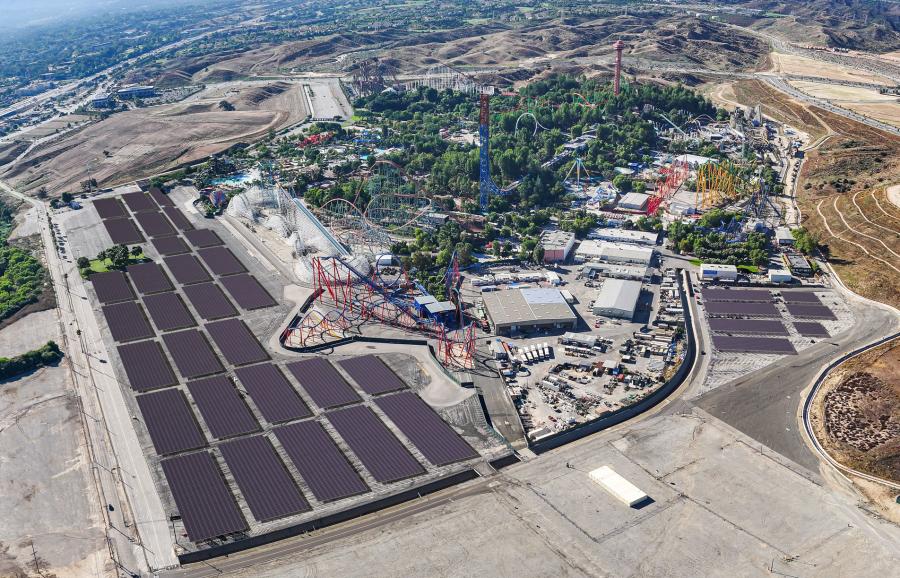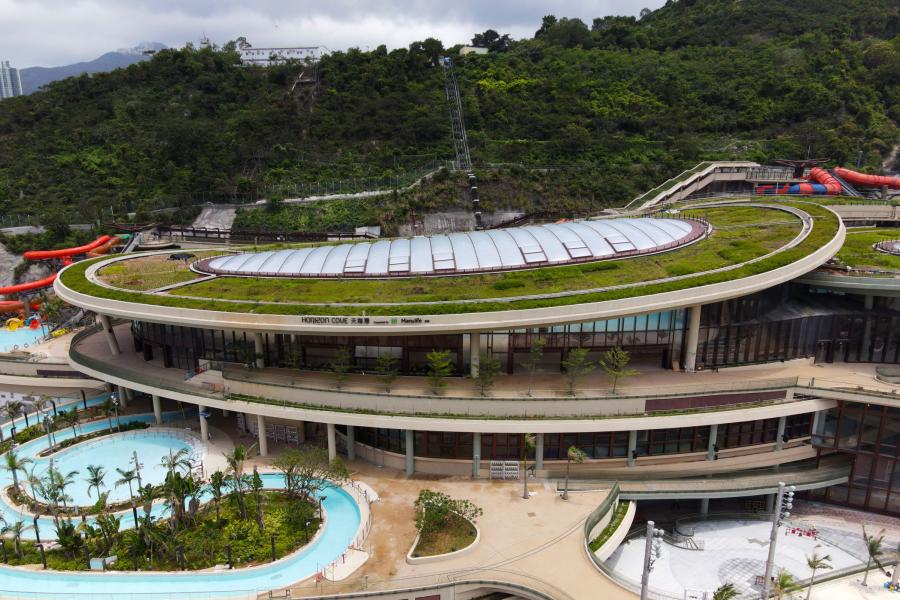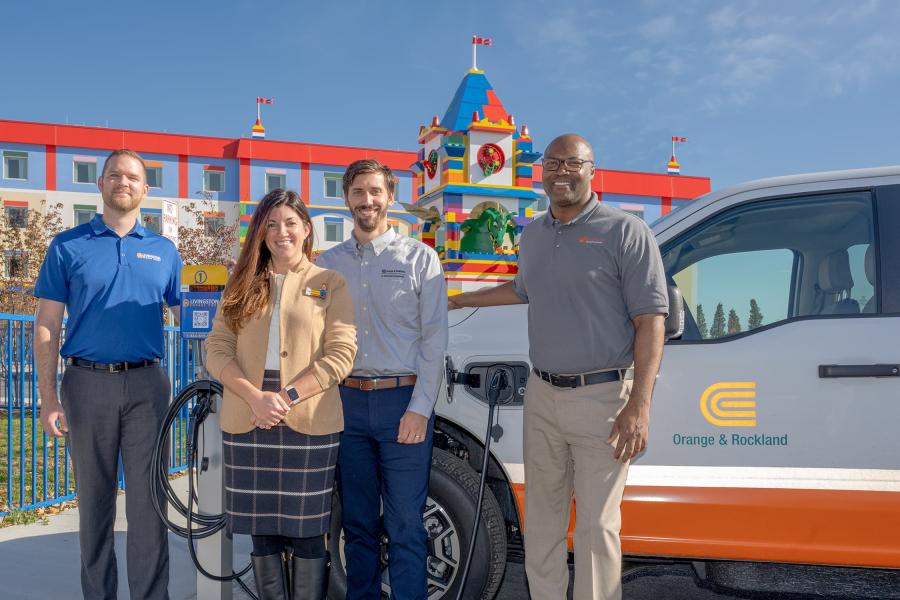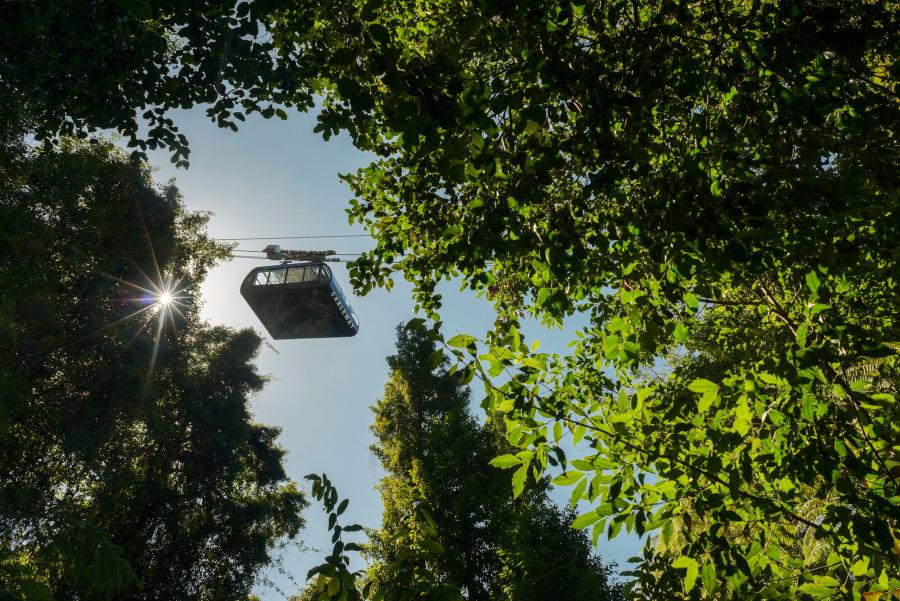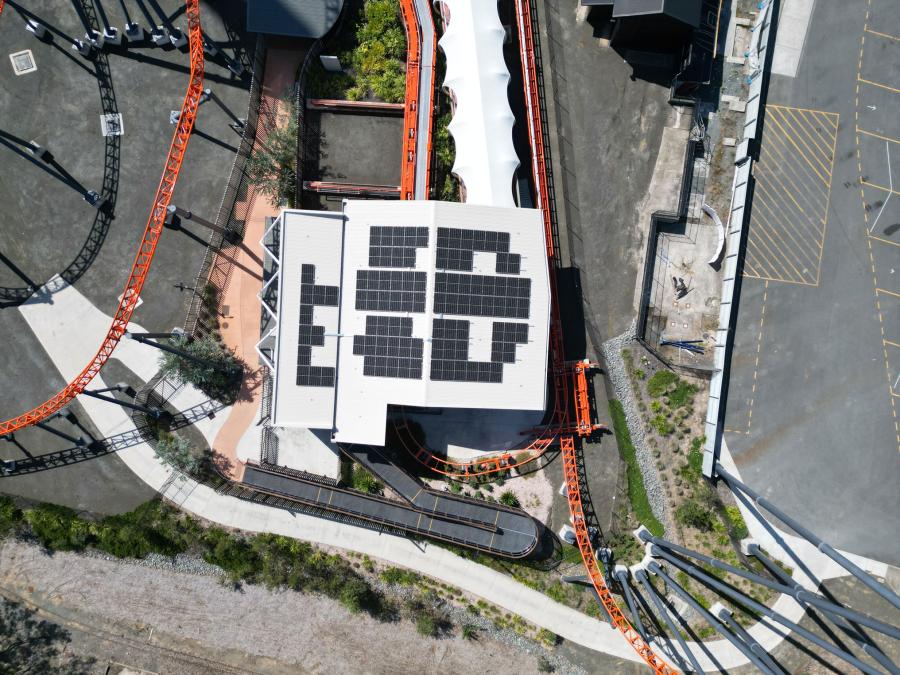From sustainable catering practices to solar panels and water conservation, operators around the world are finding innovative ways to shrink their carbon footprint and make their attractions greener. In honor of Earth Day, April 22, Funworld highlights sustainability successes and suggestions from a variety of attractions.
Korkeasaari Zoo
The Korkeasaari Zoo in Helinksi, Finland has the goal of becoming carbon neutral by 2030. “Not only do we need to communicate, educate, and inspire our visitors about biodiversity loss and climate change, but we also need to ensure that we lead by example, reducing our own impact on the environment,” explains marketing director Susanna Silvonen. With the help of an outside partner, the zoo has calculated its carbon footprint every year since 2016.
“The calculations demonstrate the effect different operations have on our carbon footprint and help us evaluate where the biggest impact can be made,” Silvonen says. “Our first step was to move away from fossil energy. By changing to green electricity and renewable district heating, we pushed our heating and electricity emissions to zero and managed to reduce our total carbon footprint by 40%. We are gradually migrating towards electric vehicles and machinery in our own use.”
The zoo has incentivized visitors to purchase climate-friendly catering options by placing them at the top of the menu and pricing them lower than portions including meat. This reduced the catering carbon footprint per visitor by 10%. In addition to rethinking catering options, zoo staff uses an environmental management system that supports operations.
“The main goals have been reducing mixed waste by increased recycling, reducing energy consumption by modernizing our HVAC systems for maximum energy efficiency as well as furthering responsible product, and service purchases and avoiding unnecessary purchases,” Silvonen says. Staff get public transport vouchers and free access to city bikes to help them reduce the environmental impact of their commute, which has reduced their CO2 footprint by 25%.
Georgia Aquarium
In the past, sustainability projects at Georgia Aquarium had been siloed within individual departments and weren’t being widely shared across the organization. To encourage stronger communication about sustainability plans and goals, the Georgia Aquarium’s Sustainability & Conservation Culture Task Force formed in January 2023. The team has 22 members from 13 departments.
“The guest-facing component involves participating in activation days such as Earth Day and International Whale Shark Day,” says Elaine Alberts, manager of conservation policy. “Behind the scenes, the task force is preparing to run a pilot recycling program to help centralize the many types of recycling that are already happening around the building.”
To communicate this development, Georgia Aquarium now makes use of a quarterly sustainability newsletter. Each issue features a “sustainability superhero” that highlights sustainability efforts in different departments. “The Sustainability & Conservation Culture Task Force has found that the greatest way to propel sustainability forward is by identifying team members who will champion sustainability within their own departments or area of expertise,” Alberts adds. “By finding the folks who are willing to champion projects, their enthusiasm for the work motivates others to participate.”
Efteling
As a nature park run by a foundation committed to sustainability, Efteling in the Netherlands takes part in several sustainability initiatives. Among them is the use of natural groundwater to heat and cool buildings rather than gas. The process is called heat-cold storage, or HCS. This sustainable switch began with the Efteling Hotel in 1992, but all offices are now gas-free.
The HCS system will be completed with the addition of the new Efteling Grand Hotel, slated to open in 2025, and the new themed area and attraction Danse Macabre, which is projected to open later this year. Fons Jurgens, CEO of Efteling, recommends that operators “start off with small improvements—ask your employees for ideas. Every little bit helps. A shared responsibility will take you further.”
Six Flags Magic Mountain and Hurricane Harbor Los Angeles
Upon the opening of its new 12.37-megawatt solar carport structure (estimated to be completed in mid-2024), Six Flags Magic Mountain and Hurricane Harbor Los Angeles will be able to offset 100% of its energy usage with solar.
The carports will produce around 20.8 million kilowatt hours of energy annually, which is equivalent to the electricity consumption of 2,874 homes. Each year, it’s estimated to offset greenhouse gas emissions comparable to 34,194 barrels of oil consumed.
“Six Flags is continuously working towards sustainability in all areas of operations for a cleaner, greener future,” says Alex French, marketing manager of communications and advertising. “Together, we can make advancements towards improving and protecting our communities and environment.”
Water World Ocean Park Hong Kong
Water World Ocean Park places a focus on water conservation. “The park’s water filtration system features a state-of-the-art technology which, compared to conventional filtration technologies, minimizes backwash volume and saves up to 90% in water consumption,” says Chief Executive Ivan Wong. “In addition, the showerheads selected for all shower rooms on premises are Grade 1 models according to the Hong Kong Water Supplies Department’s Water Efficiency Labeling Scheme.”
Wong adds that Water World’s environmentally conscious design encourages visitors to consider the importance of preserving nature while having fun. “We will continue to enrich our environment endeavors to inspire our industry counterparts to embrace ESG (environmental, social and corporate governance),” says Wong.
Legoland New York
Legoland New York worked with Livingston Energy Group to install electric vehicle (EV) charging stations at their main gate in June 2022, making it convenient for guests to charge vehicles while visiting. The team at the Livingston Energy Group coordinated funding options and provides ongoing maintenance and support. The charging stations are now listed on the Livingston Charge Port app, which boosts visibility of the amenity for EV drivers searching for a place to charge.
Visitors to the park can also view real-time charger availability and monitor their charge status. Legoland’s management team also has access to a dashboard where they can track and manage energy usage. In the first year and a half of use, the impact of the energy saved by the EV chargers is equivalent to 7.9 tons of recycled waste—or more than 25,000 fewer pounds of coal burned.
“Overall, installing charging stations has not only enhanced our commitment to reducing carbon emissions but has also contributed to support of the broader adoption of electric vehicles in our community,” says Kerin Barney, senior zone operations manager at Legoland New York.
Puy du Fou France
With more than 2,000 animals on-site across its attractions, Puy du Fou focuses on animal welfare and conservation of breeds whose numbers are declining. Park employees believe that when animal breeds go extinct, it impacts our environment and other species—illuminating the importance of retaining biodiversity.
“The aim of the animal conservatory is to bring together breeds with low numbers, mainly from the Grand Ouest region, to raise their profile and ensure their survival,” explains Sabine Renou, corporate social responsibility (CSG) project manager. “It also aims to raise public awareness of the disappearance of these hardy breeds and attract potential breeders.”
In addition to raising awareness, the Puy du Fou Falconry Academy has donated more than €700,000 to numerous associations around the world including EWT South Africa, VCF Vulture Conservation Foundation, and Bioandina Argentina since it began in 1990.
Scenic World
Scenic World in New South Wales, Australia has several ongoing sustainability initiatives, including its use of the Pulpmaster composting system to sustainably manage organic waste.
“After the natural compost system processes organic waste from food, beverage, and biodegradable packaging waste, this is redirected to farms to support their business, and has diverted many tons of organic waste away from landfill,” says Anthea Hammon, managing director.
Scenic World’s food and beverage wastage output is consistently below the industry standard of 5%. Hammon stresses the importance of collaborating with and supporting local partners and like-minded businesses.
“For example, the land care work that Uncle David King is doing hinges also on partnerships with Bushcare, Landcare, and Western Sydney University,” she says. “Scenic World also works closely with the Explorer Bus—which is Carbon Neutral Certified—to encourage visitors to drive less while visiting the sights.”
Dreamworld
In collaboration with Origin Zero, Dreamworld in Queensland, Australia, installed the country’s largest theme park solar system, which it expects to generate an estimated 21% of the park’s annual electricity usage.
It is also expected to reduce its carbon emissions by an estimated 21% annually. The solar system will help power some of Dreamworld’s biggest attractions, including The Giant Drop, The Claw, and Steel Taipan. The panels are now fully installed and due to begin operation in April 2024.
Commercial and Facilities Director Dwayne Clark recommends that operators review existing processes to see what changes could make an impact. “We have a park of significant size that sees a lot of Queensland sunlight, so it felt like a step that made sense for our business,” he says.

